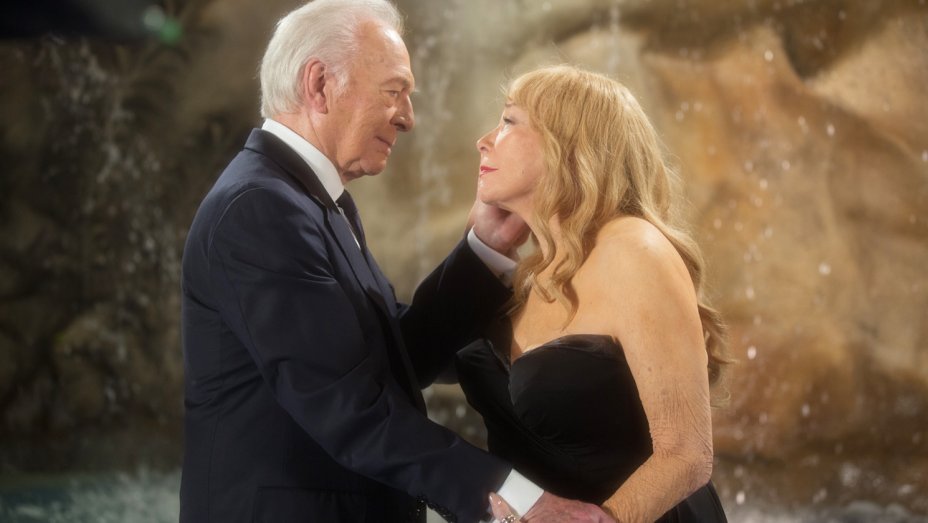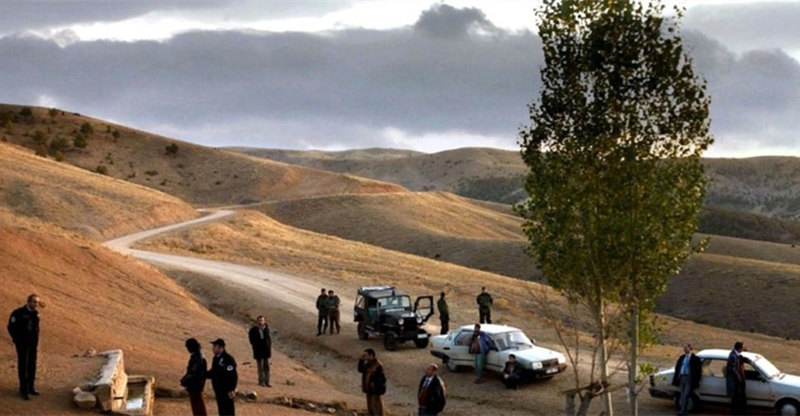Back in 1999, John J. Puccio posted one of the first DVD reviews of “Monty Python and the Holy Grail,” calling it “one of Python’s wackiest films, while being one of their most wildly uneven, too.” He gave the no-frills release a 7 out of 10.
In 2001, when Movie Metropolis was still called DVD Town, Dean Winkelspecht reviewed the Special Edition DVD and called it “the greatest cult film of all time” en route to rating it a 10 out of 10.
In 2003, Dean reviewed the 2-Disc Collector’s Editionand said that the addition of collectible items was nice, but that he wasn’t sure it would warrant spending another $40 just to upgrade.
Then, in 2006, I reviewed the 3-Disc Extraordinarily Deluxe Edition, which included a new transfer, new master, and an audio CD. Less jaded than John and more critical than Dean, I gave the film an 8 out of 10 because of the way that the humor intersects with corny bits that are now as famous as the film itself.
Well, here we are again—this time on the occasion of the Blu-ray release. It’s even starting to feel a bit much to the Python bunch, with Terry Gilliam remarking in his introduction to the “lost animations” that people probably have numerous versions of this film, so why buy it again? Those lost animations that never made it into the film, those are “the only reason to buy this Blu-ray,” Gilliam says. “If we kept them in the film, the film would have been a great success and we wouldn’t be selling Blu-rays.”
Wow. And I thought consumers were jaded. It gets even better. As Gilliam looks over some of the scenes that are overlapping and slightly redundant, he says, “We spend weeks throwing this crap out so you don’t have to watch this,” and now he has to go over it and provide introductory remarks that he delivers rather grumpily. Was he just being a Python?
Given how wacky “Monty Python and the Holy Grail” is, I wouldn’t put it past him. And considering that before this spoof the British comedy troupe had only done brief sketches for television on “Monty Python’s Flying Circus,” their first full-length feature comes together remarkably well.
First and foremost it’s a playful parody of Arthurian legend, with the narrative splitting off into smaller stories in the tradition of Chaucer’s “Canterbury Tales.” King Arthur (Graham Chapman) sets out on horseback—make that on foot but pretending to be riding a horse while his right-hand man, Patsy (Terry Gilliam) clip-clops two coconut halves together to produce the sound of a cantering horse’s hooves. The good king is determined to round up knights for his round table. As he pulls together followers—Sir Launcelot the Brave (John Cleese), Sir Robin the Not-Quite-So-Brave-As-Sir Launcelot (Eric Idle), Sir Galahad (Michael Palin), and Sir Bedevere (Terry Jones)—they get their charge from a cartoon God to seek the Holy Grail. And so they do, with the functions and quests of knighthood spoofed along the way.
The idea of monarchy also gets a raking over the coals (“I’m your king”; “Well, I didn’t vote for you.”), as does the ultimate authority—God himself—who’s shown in some of the animated sequences that are intercut with the sketches (the image of God, we learn, is of W.G. Grace, an early cricket legend.
“Monty Python and the Holy Grail” may not come together with the satirical force of “Monty Python’s Life of Brian” (1979), but it’s one of those films that has remained funny over the years, probably because it’s generated so many sketches that can be described as “classics.”
There’s the battle between King Arthur and the Black Knight, during which Arthur whacks off a limb at a time until his pugnacious opponent is nothing but a trunk . . . and still talking smack.
There’s the killer rabbit, a white a fluffy fellow who goes for the jugular and decimates the crusaders.
There’s the Knights who say “Ni,” whose penalty for crossing their forest is to bring them a shrub.
There’s the “bring out your dead” sketch, that has fun at the expense of plague victims.
There’s the how-to-tell-a-witch routine.
There’s the flying cow and livestock defense of the French-held castle—in this film, the French are the infidels!
There’s Sir Robin’s minstrel (Neil Innes), who cheerfully sings of each act of cowardice while clip-clopping behind his liege.
There’s the Massacre of Sir Launcelot, who rushes to the rescue of a fair maiden, only to find out that life’s not fair and there’s no maiden . . . only a young man with a bit too much estrogen in his system.
There’s the Trojan Bunny that would have worked, except for one minor oversight.
There’s the Bridge of Death, and the three questions (that vary) which the knights must answer.
And there’s the memorable horseless knights on horseback and their encounter with a verbally abusive French guard who calls them on their use of coconuts and insults them 165 different ways.
But perhaps most memorable is that the Python crew has some fun with the whole notion of moviemaking, the way that Mel Brooks often does. And I’m not just talking about those Swedish subtitles. When you first press “play,” you get the same thing unsuspecting theatergoers saw back in 1975: a black-and-white beginning to a film titled “Dentist on the Job.” You watch the entire title sequence wondering, What the hell? And the Pythons push it even further, showing an opening scene from that film before running up the gag flag and explaining themselves. For the ending, it’s more of the same. You don’t know when the film begins, and you don’t know when it’s over. The moviemaker as God: it’s a mystery!
Not all of the gags are equally funny, and this is particularly true at the two-thirds point in the film. But there are enough classic sketches to make this a classic film 38 years later.
Video:
The film was newly remastered in HD for the Blu-ray, and while it’s an upgrade from previous DVD releases, it’s also uneven. Close-ups, two-shots, three-shots, and other medium shots tend to be sharply defined and bursting with detail that we could never appreciate before. But there are long shots and some exteriors where the background grain is so heavy that it deteriorates into noise, as happens especially in the final castle scene. Thankfully moments like that are few. The film is presented in 1.66:1 widescreen.
Audio:
The audio, while again an improvement, also struck me as uneven. The English DTS-HD MA 5.1 track at times suffers from illogical distribution across the speakers, where sound suddenly comes out of a front right or left speaker and surprises you, it’s that noticeably jarring. Other times, as when two or three knights banter, the soundtrack feels front-heavy. Ambient sound and effects aren’t as pronounced as you’d expect, except for the clip-clopping of coconuts and the animals being catapulted at Arthur and his knights. And the bass really doesn’t come to life until the famous “hand grenade” scene. Now, all those complaints aside, is it clear? Yes. Is the lossless audio an upgrade? Yes. But don’t expect the grail.
Extras:
Ported over from previous DVD releases are: commentaries by Gilliam and Terry Jones, and by John Cleese, Eric Idle, and Michael Palin; “Quest for the Holy Grail Locations,” with Palin and Jones; “Lego Knights: The Knights of the Round Table in Lego”; special Japanese version; “How to Use Your Coconuts (An Educational Film)”; BBC Film Night on location; three sing-along songs; and a cast directory/photo gallery.
If you’re a believer in UltraViolet digital copies, there’s a code for you to add this title to your download list that floats in the clouds somewhere. “Monty Python and the Holy Grail” is also BD-Live enabled.
As for what’s new? “The Holy Book of Days” Second Screen Experience requires an iPad and provides something for people to fiddle with in their laps while they’re watching the movie. Then there are outtakes and extended scenes with a four-minute introduction by Jones, who watches the “lost” footage for the first time in 37 years: Sir Robin and the 3-Headed Knight, Constitutional Peasants, Get on with It, Shorter Takes, Old Crone, Wedding Slaughter (with Extra Gore), and Lots of Very Silly Bits.
Then there’s 13 minutes total of “Lost Animations,” which Gilliam describes as “radio with pictures” and explains how they were inspired by a real illuminated manuscript, where “bored” monks drew strange and wonderful characters and elaborate letters and vinery on the borders of pages. They’re clever and fun to watch—the kind of highbrow stuff that makes “Monty Python and the Holy Grail” a cult favorite.
Bottom line:
Not all of the gags are equally funny, and this is particularly true at the two-thirds point in the film. But there are enough classic sketches to make “Monty Python and the Holy Grail” a classic film 38 years later. Is it worth the upgrade? Well, if you like this film, the sad truth is that it’s yet another visual upgrade, and it does contain what Gilliam called “the only reason for buying the Blu-ray”—those lost animations.


